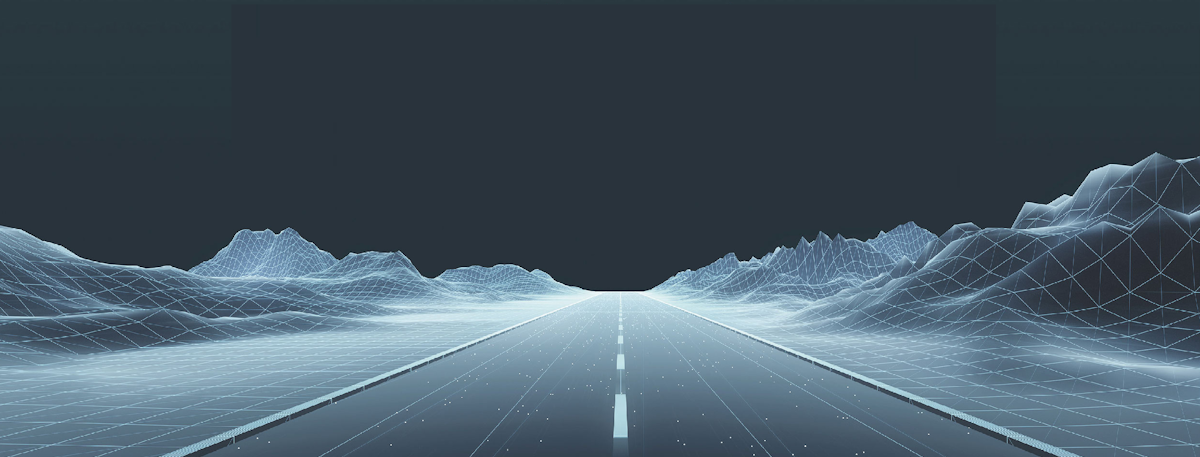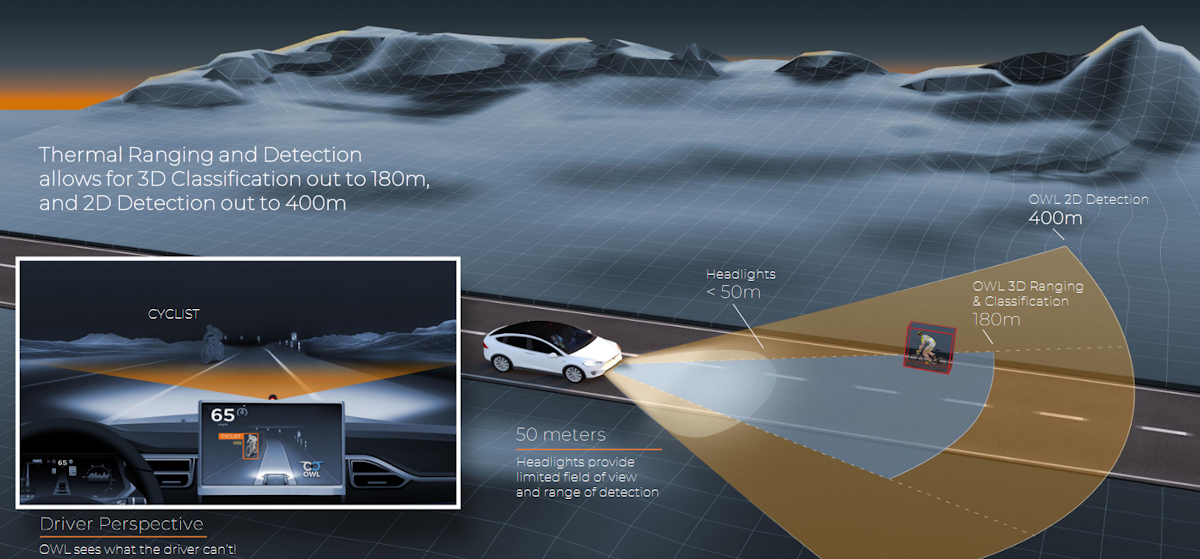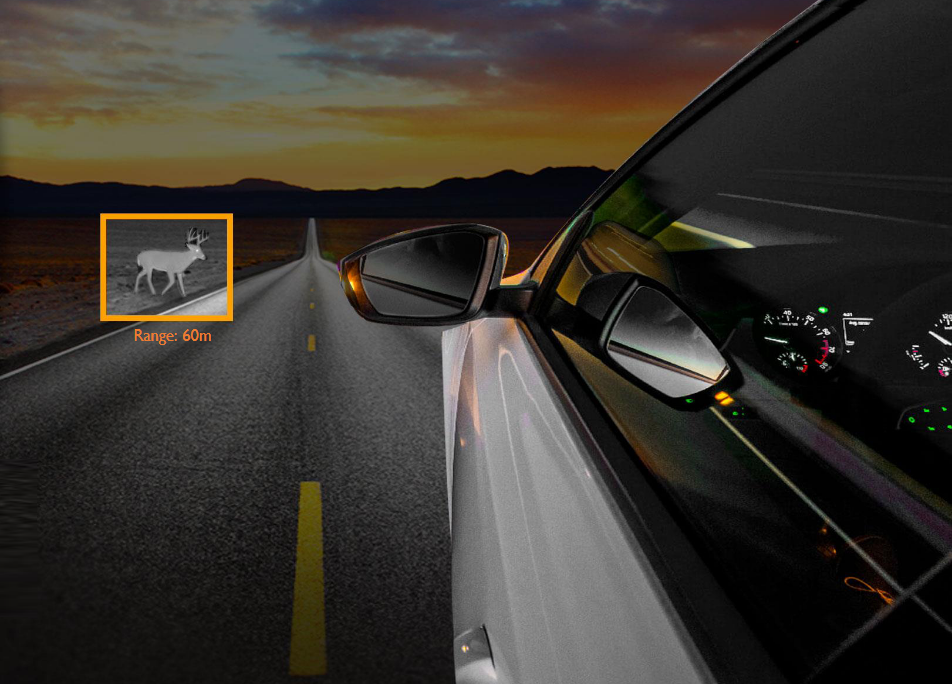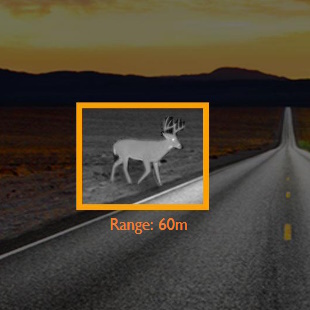A few evenings ago as I pen these words, my wife (Gina the Gorgeous), your humble narrator (I pride myself on my humility), and a number of other people were visiting at a friend’s house. There were about 20 of us. Only non-alcoholic drinks were consumed. It was dark when we all decided to head for home. Some were walking. I was driving. At least one of the people on foot almost failed to complete their journey.
Some of the folks set off perambulating down the road while the rest of us milled around in the street saying our goodbyes. On the one hand, the neighborhood we were in was not well lit. On the other hand, I was totally aware that some of our companions were on their way in front of us. Even so, I almost ran over one of our friends, who was dressed all in black, when—for some unaccountable reason—she decided to cross the road right in front of us as we cruised down the road.
Admittedly my car is quiet, but I was surprised she didn’t hear it. I was even more surprised to discover that, even though I had my headlights on, I failed to see her until it was almost too late.
So, you can only imagine my surprise to receive an email the very next day with a subject line saying, “Within Five Years, All New Cars Will Be Able to See at Night!” I would say this was serendipitous, but that’s one of the many words that isn’t in my vocabulary and I don’t know how to spell it. Be that as it may, this explains why I soon found myself chatting with Wade Appleman, who is the Chief Business Officer at Owl Autonomous Imaging.

Owl’s mission is to save lives (Source: Owl)
We started with Wade exposing me to some facts and figures of which I had not previously been aware. For example, there are currently around 700,000 pedestrian fatalities worldwide each year. O-M-G! That’s more than three times the total population of Huntsville, Alabama, which is where I currently hang my hat. It’s like imagining a post-apocalyptic scenario in which I were to drive around Huntsville seeing dead bodies strewn all around, but instead of the cause being a pandemic (e.g., The Stand by Stephen King) or a zombie uprising (e.g., The Walking Dead by Robert Kirkman), the fatalities are all down to cars.
For reasons no one can be 100% sure of (although there are lots of theories), the past decade has seen a 77% increase in pedestrian deaths in the USA, with 2022 having the highest level in the past 41 years. Furthermore, 76% of these deaths occur at night.
I was just thinking that I typically wear jeans and a dark jacket whenever I take a stroll around our neighborhood at night. I can see cars approaching, and I always assume they can see me, but—based on my experience as described at the start of this column—I now realize that these drivers may sail past blissfully unaware of my existence. Although sporting it may make me feel like a plonker, I’m starting to think that some Reflective Walking Gear is in my future, but we digress…
The last two numbers I wish to share are that governmental regulations for nighttime safety are coming to six continents, and that 0% of RGB image sensors (i.e., regular optical cameras) can see in complete darkness.
“Six continents,” eh? I can’t help myself. When I was a young lad at school, I was taught that the term “continent” referred to a large continuous expanse of land that is surrounded by water. I was also taught that—listed from largest to smallest—there are seven continents: Asia, Africa, North America, South America, Antarctica, Europe, and Australia. (Based on this, I’m assuming the six continents in the previous paragraph exclude Antarctica.)
As usual, I eventually came to discover that my teachers were less than forthcoming with the truth. For example, they neglected to mention that continents are generally identified by convention rather than any strict criteria (which is reminiscent of the debate regarding Pluto’s status, or lack thereof, as a planet). The thing is that North and South America are connected, which causes some to class them as a single continent called America. Similarly, Europe is connected to Asia, the combination being known as Eurasia. And, when you think about it, Africa is also connected to Eurasia, where this combo is known as Afro-Eurasia. This means that, depending on your point of view, there are seven, six, five, or four continents. But, once again, we digress…
Founded in 2019 and based in Rochester New York, the folks at Owl are thermal and computer vision experts who are on a mission to save lives. They cover both the hardware and software aspects of using thermal imaging to provide detection, classification, and ranging. On the hardware side, Owl is a fabulous fabless semiconductor company that creates long-wave infrared (LWIR) thermal focal plane arrays (thermal imagers) that are then put into a camera with a lens assembly to see thermal scenes.
However, a thermal camera in isolation is not all that interesting. You also need to be able to understand what’s happening in the scene by using artificial intelligence (AI) and machine learning (ML) to perform object detection, classification, and ranging. This is like what traditional RGB cameras do in daylight, but there are special considerations when working with IR in general and LWIR in particular, and this is another area in which the folks at Owl offer a tremendous depth of experience and expertise.

3D Thermal dramatically extends detection and classification (Source: Owl)
One question that popped into my mind was that of cooling. Thermal imaging isn’t my area of expertise, but I was vaguely under the understanding that thermal sensors needed to be cooled. Wade set my mind at rest when he told me that Owl’s fully digital imaging sensors do not need additional cooling.
Wade then informed me that there’s another issue, which is that thermal cameras oftentimes need to be recalibrated on-the-fly to reset their thresholds in response to temperature changes in the scene. One solution to this involves a technique known as “shuttered calibration,” which requires a shutter on the camera to be closed. We can think of this as the camera blinking. A little more thought tells us that the last thing we want in a nighttime vision system is for it to blink at a crucial moment. So, I was happy to discover that the folks at Owl have developed a shutterless calibration solution (phew!).
I just had a memory of an incident from about 20 years ago when a friend was driving his family back home from a week’s vacation at the beach. On the way, while driving through a woody area, they hit a deer, which turned their van into a write-off. They were lucky that no one in the family suffered serious injury (I was unlucky because my friend called me in the middle of the night asking me to come and pick them all up).

Oh dear, a deer (Source: Owl)
With government regulations on the way, automotive OEMs and Tier 1s are searching for sensors that work in complete darkness, bright light, rain, snow, and fog to eliminate pedestrian fatalities and make their cars the safest in the world. This is a hot topic (no pun intended) that is getting hotter by the day.
Owl’s new automotive safety technology can see and identify warm objects in total darkness up to 200 yards ahead. This technology is currently being reviewed and tested by the world’s leading car makers. If you happen to be attending CES 2024, which is taking place 9 to 12 January in Las Vegas, then Owl’s immersive LWIR thermal imagine experience will be showcasing thermal solutions in action at Booth 6867 in the West Hall.
The more I think about it, the more I want a nighttime thermal imaging solution with AI-based object detection, classification, and ranging in my own car. What say you? Have you had any experiences in which a nighttime vision solution would have changed your world for the better?





I’m in the four-continents camp. “I’m assuming the six continents in the previous paragraph exclude Antarctica.” – At least you admit it’s an assumption. Antarctica chooses not to be offended.
It’s amazing how we take so much for granted when we are younger. For example, I was brought up being told there are 9 planets in our solar system. It was only when the the “is Pluto a planet or not” debate came up that I discovered there really isn’t (or wasn’t) a good definition as to what a planet actually is.
Max,
But surly these new self-driving cars can see at night?
I’ve never driven one, but it feels like a patch to put their night vision up on the display when driving in manual mode (assuming they don’t do this already)… or maybe I’m missing something.
I’m no expert here, but I think a lot of today’s self-driving cars use a combination of lidar and radar for the nighttime driving part — the folks at Owl will talk your leg off explaining why their thermal imaging is better — although the very best solutions typically involve the fusion of multiple sensor types — so I think the future will involve RGB camera + thermal camera + lidar + radar.
Self-driving cars should be required to pass the same written and road tests that human drivers are require to pass, as self-driving cars on the road must be able to negotiate with human drivers in other cars and with human pedestrians.
I found a perfect device at nightAssist.com.au
To be honest, this website seems a bit “thin on the ground” — the links to things like “Team” and “History” just return you to the home page and there’s only one item in the store without any specs (sad face).